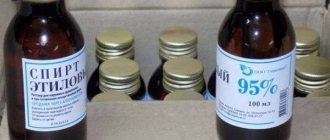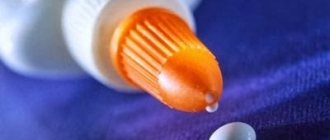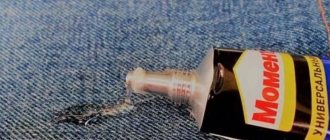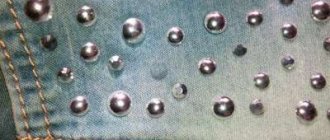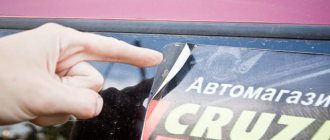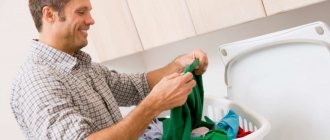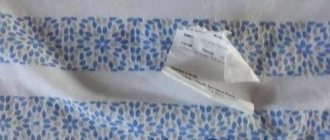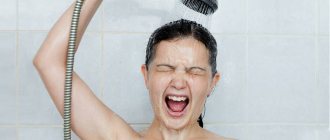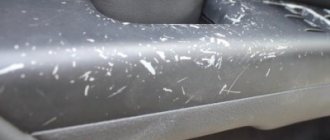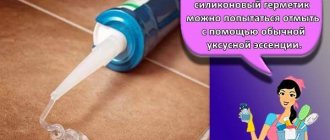The polyvinyl acetate composition gives good results when gluing various surfaces, so getting it on the fabric can lead to damage to the item.
To effectively deal with unwanted traces, you can use home recipes or use special products.
In this article we will tell you how to remove PVA glue from clothes at home.
How to remove fresh stains?
It is easiest to deal with a fresh stain when a white drop has not yet hardened on the surface of the fabric. In this case, you will have to act quite quickly. The method of getting rid of contamination should take into account the composition of the glue.
of PVA are:
- water emulsion of polyvinyl acetate;
- plasticizing additives.
Washing procedure:
Remove the bulk of the glue from the material with a napkin or rag. You need to work with blotting movements so as not to smear the stain even more.- If possible, remove any remaining product with a sharp tool using scraping movements, moving from the edges to the center. It is better not to experiment with such processing with delicate materials.
- Hold the stained area of fabric under running water, directing it so that the stain is washed.
- In a separate container, dilute the detergent (gel, grated laundry soap or powder) in warm water.
- Dip the item into the washing solution.
- Leave for about half an hour.
- Rub the affected area.
- Wash the product in any convenient way.
Intense exposure should be avoided so as not to damage the tissue itself.
The most common tips for removing glue
One of the first places is acetone, which does its job perfectly. In addition to this, you can use paint thinners, but it is better not to use this method for dyed things - the bright design will come off right away.
Some use gasoline
It is important to know here that the method is effective, but requires additional effort, namely: after it you have to wash off greasy stains with strong powders
To effectively remove stubborn stains, use vinegar. Acid will corrode any glue, especially superglue, and your item will look like new.
Stationery glue has a lighter structure, so only a stream of hot water will be enough for it. The glue will quickly swell and come off with the help of liquid. And the remains are easily removed with a brush.
One sure way is freezing. We put the damaged item in the freezer and wait for a while. The glue will freeze and can be easily removed with a brush.
You can use the opposite option - heat. To do this, place napkins on both sides of the problem area so that the stain is completely covered. We iron it and watch how the glue remains on the surface of the napkin. This is done several times.
With very thin fabrics, such as chiffon, the vinegar solution will remove the glue. Just add it when washing and turn on the washing machine. Large stains cannot be removed this way, but small droplets of glue will come off and leave no traces.
Office glue can be easily removed with alcohol. Soak cotton wool in it and apply for half an hour.
Another important assistant will be “anti-glue”, which is easy to purchase in stores. It effectively removes all types of glue. It is only advisable to carefully study the instructions before doing this.
Top 3 special tools
In some situations, homemade recipes may not help . Then special drugs will come to the rescue.
Grass Antigraffiti
This product, Grass Antigraffiti, is an effective product for removing traces of glue, chewing gum, tape, etc.
It contains:
- surfactant;
- organic solvents and other components.
Use Grass Antigraffiti for manual cleaning in undiluted form, simply moistening the stained area with it. After leaving it on the fabric for just a few seconds, the stain will rub slightly. After this, the product is washed.
The cost of a 0.6 liter bottle. with a sprayer - about 300 rubles. The drug is also available in 5 kg canisters.
Advantages:
- efficiency;
- economical consumption;
- affordable price for a fairly large volume.
Flaws:
- strong unpleasant odor;
- may damage the material;
- It does not cope with all traces of glue on fabric.
Duty Universal
The product is a professional remover of glue and adhesive base of stickers, tape, etc. The product has an enhanced effect and is produced in Russia.
Compound:
- Non-ionic surfactants – 5%;
- isobutane;
- D-limonene;
- organic compounds.
The product is easy to use: it is sprayed onto the stained area, then left for a couple of minutes and the material is cleaned. The processing is completed by washing. Price for volume 0.4 l. – from 350 rubles.
Advantages:
- efficiency;
- ease of use;
- may damage the surface of the material;
- quick results;
- no effort required;
- copes well with old marks;
- good volume.
Minuses:
- pronounced strong odor;
- sometimes re-processing is required.
Mellerud
The 0.25 l bottle is produced in Germany.
The product allows you to deal with traces of glue, as well as other stains - lipstick stains, ink, etc. Price – 450 rubles. How to use:
- Soak a napkin in Mellerud.
- Moisten the stain area.
- After the reaction has passed, the remaining glue can be cleaned off.
- Rinse the surface of the material under water and wash as usual.
The product has good reviews. Its disadvantage is the high cost for a small volume and the need in some cases to repeat the processing.
How to dissolve dried PVA glue: proven methods and means
The popularity of PVA glue is determined by several factors: affordable price, resistance to moisture, frost resistance, strength of the adhesive bond, fire resistance, non-toxicity, absence of marks after drying, since it is transparent. But sometimes, when applying too thick a layer, the adhesive composition becomes too noticeable and catches the eye. What to do in this case?
Recommendations
you deal with the problem of traces of PVA glue on clothes :
- Solvents that are aggressive in their effects can damage fabric fibers, so their use should be limited and only used when other methods have failed.
- When removing stains, especially those involving chemicals, it is best to wear rubber gloves.
- The longer the stain remains on the material, the more difficult it will be to remove.
- The technology for cleaning an item should take into account the type of fabric, its color, the presence of decor, etc.
Useful information on how to remove traces of glue from clothes is in this section.
Removing PVA from different types of fabric
The task of removing stains of PVA glue or other compounds is complicated by the fact that it is impossible to use a certain method for any fabric
You should take into account the material from which the clothing is made, and only then choose a product to remove the stain.
PVA can be removed from linen or cotton fabric with alcohol. Denim clothing can easily withstand treatment with nail polish remover or gasoline. A suede item should first be exposed to hot air or steam, and then remove traces with ammonia.
For delicate fabrics and silk, the solvent is very dangerous, so in this case the freezer will come to the rescue, in which you should keep the item for about two hours, then remove the adhesive with a nail file. Or mix vinegar and ammonia in equal quantities and rub the contaminated area with this solution.
A stain left on a woolen item can be removed with 20 g dissolved in 100 ml of water. citric acid. After applying this product to the fabric, the item should be washed.
When a PVA stain is placed on a fur item, you should use a simple soap solution. To restore its former shine, treat the fur with vinegar water.
If these methods did not lead to the desired result, or after active manipulation the fabric was damaged, save the situation with an original patch or sticker. With a quick response, the item can still be washed.
Universal method
If glue gets on any product, you need to carefully blot the stained area with a dry paper napkin. A paper handkerchief will do.
What you will need
A dry stain can be cleaned off with a sharp knife or nail file.
The procedure must be performed carefully, otherwise there is a risk of damaging the canvas
Universal means include:
- hydrogen peroxide - necessary to remove yellow glue marks from white canvases;
- laundry soap is used as a means for soaking with preliminary rubbing of glue stains;
- washing powder - soaking and main wash;
- solvents without acetone, paint removers.
When using aggressive chemicals to clean defect areas, such as solvents, you need to test it on the wrong side of the product in an inconspicuous place.
They should not be used on delicate fabrics. There is no need to try to remove marks with wet wipes, this will only make the situation worse.
How to remove old wallpaper glued to PVA?
It will not be possible to remove such wallpaper using the usual method (wetting it with a rag with water and scraping it off with a spatula).
To partially soften the glue, you will have to destroy the wallpaper as much as possible. It is almost impossible to do this with a spatula.
You can also use a needle roller, which is used to pierce gypsum board when making arches.
If you don’t have such tools, you can use coarse sandpaper, a stiff wire brush, or a drill attachment.
After the wallpaper is damaged as much as possible, moisten it generously with liquid to dissolve the wallpaper glue.
A home steam generator also does this job well.
To remove wallpaper, you will need a not wide, strong spatula.
After the wallpaper is removed, a layer of PVA glue still remains on the wall; this must also be removed. If the glue has softened well, you can try to wash it off with hot water or wallpaper remover; if the glue film does not give in, it is better to leave it and let it dry well, and then remove it with a drill with an attachment or sandpaper.
Pour water into a ladle, take a kitchen sponge, dip it, starting from the top, spreading it, trying to wet it more. After 2-3 minutes, pick up a piece of wallpaper and pull. Sometimes you get lucky and a very large piece comes off. Where it doesn’t work, blot it additionally. Try not to pick so the wall remains level.
So, cleaning with a thin spatula, go through all the walls.
I won’t speak for all the remedies, but most of them did not help me personally.
The only method (I will describe below) that brought me a minimum of expenses had to be tested with my own hands, but it takes quite a long time, here you need to decide what is more profitable than 20 kilograms of putty or two days of wasted time, 5 kilograms of putty and the possibility of ruining the floor..
So you will need a floor rag, preferably a larger one, that absorbs water well and holds it so that it spills less on the floor. And put a film on the floor, rags on top and constantly clean it. I tried gluing cellophane underneath, but it came off due to water and still flowed onto the floor.
The PVA glue gets wet after about an hour and can, although not easily, be removed with a spatula.
But the problem is that along with the PVA, the putty also gets wet, and in some places it can be pryed off with a spatula and torn off.
So at the end you will still have to putty the jambs and level the wall.
Moreover, the floor can be ruined with water.
So I won’t implement this type of PVA removal anymore, only two ways (according to the condition)
Source
How to remove it at home?
If the PVA stain was not noticed immediately, you will have to use more serious methods to eliminate it. In the case where the trace of glue remains voluminous, you must first try to remove the bulk of the frozen substance.
To do this, you can try to carefully scrape off the frozen glue from the fabric with a non-sharp object, using a wooden or metal object.
If the fabric cannot withstand such treatment, then it is better to use soda:
- wet and squeeze out the sponge;
- dip a washcloth in soda;
- working from the edges of the stain towards the center, rub the area;
- stand for half an hour;
- wash the damaged area of the item first;
- wash the entire product.
It is recommended to take into account the brand of glue, since its construction varieties have greater durability and better adhesive ability compared to stationery ones.
Vinegar
Table vinegar will help to deal with old glue stains. This method can be helpful for cleaning thin fabrics, such as chiffon.
Application:
- Lay out the product horizontally.
- Soak a sponge in vinegar.
- Place a sponge on the stained area.
- Allow the time necessary for the reaction to occur, as a result of which the PVA film begins to wrinkle.
- Carefully remove the glue.
- Wash the product.
Vinegar tends to discolor fabrics, so this method may not be suitable for bright materials or those with prints.
Alcohol
Before removing traces of glue, the item should be turned inside out. Operating procedure:
- place the item on a horizontal plane;
- Place a sheet of cardboard under the area to be treated - this will prevent the stain from moving to the other side;
- moisten a cotton sponge or swab in alcohol or vodka;
- Treat the stain with blotting movements, ensuring that the dried glue dissolves;
- wash as usual.
The use of alcohol is indicated for linen, cotton, and denim fabrics. Read about removing glue stains from jeans here.
Iron
Exposure to high temperatures helps remove the adhesive from the material. It is convenient to use a regular iron for this.
Work order:
- The item with the stain is placed on the ironing board.
- Place a piece of white cotton cloth over the stain.
- From the inside, fabric is also placed under the product.
- Iron it, trying to get the glue absorbed into the additional fabric.
- Wash using powder or gel.
If you don’t have an iron at hand, you can use a hairdryer set to hot air.
Ammonia
Ammonia as a cleaner can be used either independently or in addition to another type of treatment, for example, steam.
Moisten the sponge with ammonia and achieve good hydration of the stain by applying it for a quarter of an hour. The remaining glue is removed, and the item is washed.
Using ammonia will help in cases where other means cannot be used - for example, when cleaning suede.
Freezing
The use of low temperatures is a fairly effective approach. You can use it if the soiled item is small and can fit in the freezer compartment of the refrigerator.
For this:
- The product stained with PVA is placed entirely in a plastic bag.
- The package is placed in the freezer.
- Leave for several hours - long enough for the glue to harden and become completely hard.
- They take out the thing.
- Lay out the product on a horizontal plane, soiled side up.
- Tap the frozen drop with a wooden hammer so that the glue begins to break off. Splinters should be removed from the fabric immediately.
- Finish the glue mark with a knife.
- If there are remains of PVA at the site of the former stain, they are removed with ammonia.
- Carry out normal washing with washing powder and a small amount of soda (1 tsp).
- Rinse the product.
This method is based on the physical property of PVA glue that becomes brittle when frozen.
Steam
Steam exposure can be effective. High temperatures can also disrupt the structure of the adhesive and contribute to its destruction.
Removing stains:
- bring a kettle of water to a boil;
- place the stained area of material under a stream of steam, ensuring that the glue begins to melt;
- carefully, using tweezers, collect the glue;
- wipe the remaining trace with ammonia diluted half and half with water;
- wash the product.
When using steam, be careful not to get burned.
Piercing
Some wallpapers do not want to get completely wet and remain dry even after using a lot of water. In this case, you have to suffer, tearing them off with a spatula into very small pieces. If you encounter such a problem, you should take an awl and pierce the wallpaper. Instead of an awl, you can also use a special roller with nails. The essence of the piercing method is that water gets into the holes and thus even the lowest layers of wallpaper get wet and swell, which makes it quite easy to remove them.
